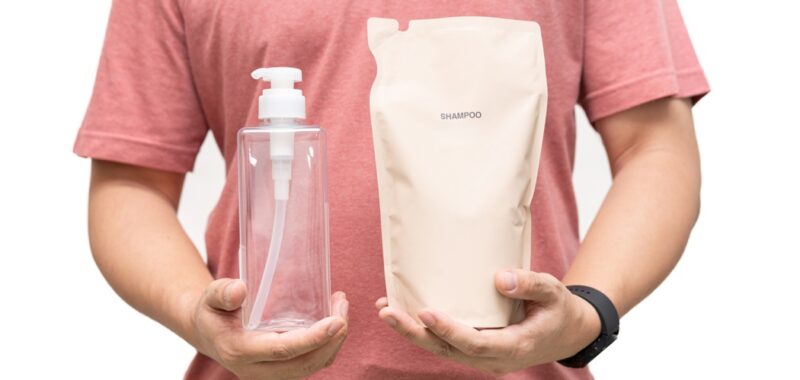To fulfil its environmental commitments in line with the Paris Agreement and contribute to fighting against plastic pollution, the Pierre Fabre Group has been implementing a strategy based on continuous improvement and studying all available solutions: reduced packaging (leaflets, cases, weight, etc), recycled materials, and recyclable packaging.
“We have set up the Green Impact Index tool, which aggregates all the criteria to be worked on into a single score. This way, we can assess the level of ecodesign of our products, in particular packaging, and measure the effectiveness of our actions. Now that all these initiatives have been put in place, we have achieved a significantly reduced environmental impact, including carbon-wise, but that is not enough, especially as the market is growing and we need to absorb this growth. As a result, we are creating specific projects to go further than the rather standard levers we use today. We aim for breakthroughs,” says Franck Legendre, Packaging, Innovation & Sustainability Director at Pierre Fabre Group.
These projects include the implementation of a deposit system as part of a coalition, which will make it possible to reuse the packs returned to points of sale by consumers, as well as the Pharma Recharge initiative, set up within a consortium a few months ago.
“Customers can fill their glass bottles from a formula dispenser in pharmacies. This reduces the need for packaging, and we are actually in the process of extending this experiment, because it has been well received. Yet, one solution is not enough, so we are looking at several options,” he adds.
Lastly, new projects also include research into new materials: two are currently being considered. The first one, Pulp in Action, is focused on cellulose fibre: it was set up by a consortium gathering several cosmetics companies. The second one, Green Bioplastics, is opening up great prospects through the use of microalgae.
Microalgae biofactories
The project was set up in collaboration with PhD Stéphane Lemaire, a microalgae specialist at Sorbonne University, under the direction of Katia Ravard, a biotechnology engineer and the Head of Transversal Projects and Biomimicry at Pierre Fabre. This research work revealed the power of microalgae to produce bioplastics.
“It is based on photosynthesis. The microalgae captures carbon from the atmosphere and directly converts it into bioplastic using natural light. We are also considering setting up a pilot test to capture plants’ carbon emissions, which would be even more interesting in terms of decarbonisation”, says Katia Ravard.
Substantiated by the work of Mariette Gibier, recruited as a PhD student on this subject by Pierre Fabre, the project was awarded the 1st Prix des Trophées for Climate & Biodiversity organised by Maud Fontenoy’s Foundation, in the Ocean and Innovation category.
“Mariette Gibier’s work aims to find out how to improve the yield of these microalgae to make them an industrial reality. Sorbonne University is already on track to set up biofoundries based on microalgae,” she adds.
This raw material could be used to design biosourced and biodegradable flasks.
“We expect the material to meet the needs of packaging, i.e. strength, formula protection, and compatibility, but we also want all transformation processes to be virtuous, as well as the end-of-life. Biodegradability is an interesting option,” confirms Franck Legendre.
Research work is underway for various parameters and Pierre Fabre expects the first industrial batches as early as 2030.
“We are in the stage of microalgae selection, so we are studying the material they generate to choose the one that will offer the best production. We also optimise the culture with different parameters: light, temperature, and CO2 concentration. The road is long, but the initial results are very encouraging,” concludes the Director.

